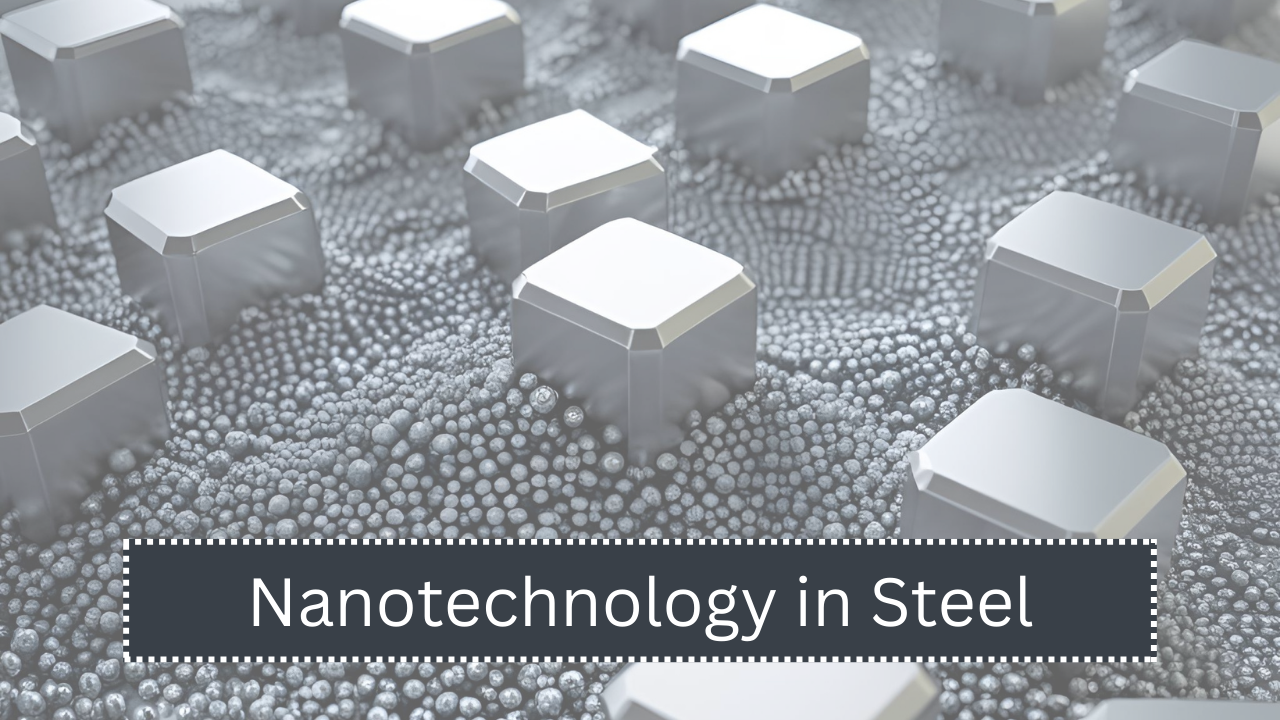Nanotechnology has opened a new chapter in materials science, especially in steel production. By working with particles and structures at the nanoscale (less than 100 nanometers), scientists have discovered new ways to improve steel’s mechanical properties, durability, and resistance to corrosion. These improvements are crucial for industries like construction, transportation, energy, and defense, where strong and long-lasting materials are needed.
This article explains how nanotechnology is used in the steel industry, its advantages, applications, and the future possibilities it brings. Special focus is given to how nanomaterials make steel stronger and more resistant to rust and corrosion.
Understanding Nanotechnology in Steel
Nanotechnology involves the manipulation of atoms and molecules to create materials with new properties. When applied to steel, it can change the material at a microscopic level to increase its strength and protect it from damage.
Main Nanotech Strategies in Steel:
- Adding nanoparticles to the steel matrix.
- Refining the grain size to the nanometer scale.
- Applying nanocoatings to protect the steel surface.
- Using carbon nanotubes or nano-oxides for enhanced performance.
Key Benefits of Nanotechnology in Steel
Nanotechnology brings several important advantages to steel. These benefits make steel more suitable for tough environments and heavy use.
| Benefit | Description |
|---|---|
| Higher Strength | Nanoparticles make the steel tougher and more resistant to stress or bending. |
| Improved Hardness | Surface hardness increases, improving wear resistance. |
| Corrosion Resistance | Nano-coatings protect steel from moisture, chemicals, and rust. |
| Fatigue Resistance | Nanostructures reduce tiny cracks and delays fatigue failure. |
| Lighter Structures | Stronger steel means lighter parts can be used without compromising strength. |
How Nanotechnology Enhances Strength
One of the main achievements of nanotechnology in steel is grain refinement. In simple terms, steel is made of small crystals called grains. By making these grains smaller—at the nanoscale—the steel becomes stronger.
Why Smaller Grains Help:
- Smaller grains create more barriers for dislocation movement (a cause of metal deformation).
- This makes the material more resistant to stress and pressure.
- The steel becomes both stronger and more ductile (able to bend without breaking).
Another method involves nano-reinforcements. Materials such as:
- Carbon nanotubes (CNTs)
- Silicon carbide (SiC) nanoparticles
- Titanium dioxide (TiO₂) nanoparticles
…are added to the steel matrix. These reinforcements distribute stress better and improve the strength-to-weight ratio.
| Nano Reinforcement | Role in Strengthening |
|---|---|
| Carbon Nanotubes | Improve tensile strength and stiffness. |
| SiC Nanoparticles | Increase hardness and wear resistance. |
| TiO₂ Nanoparticles | Add toughness and reduce crack formation. |
Nanotechnology and Corrosion Resistance
Corrosion is one of the biggest problems for steel structures, especially in marine, chemical, or humid environments. Nanotechnology helps reduce corrosion through protective coatings and surface treatments.
Nano-Coating Techniques:
- Sol-gel coatings – A gel-based solution applied to the steel surface forms a dense protective layer.
- Nanoparticle-enhanced paints – These paints have better adhesion and block moisture and oxygen.
- Electroless plating – A nano-metallic coating is deposited without electricity, forming an even layer.
Why Nano-Coatings Work:
- Fill in microscopic surface defects where rust usually starts.
- Provide uniform coverage even on complex shapes.
- Add hydrophobic (water-repelling) properties to the surface.
| Nano Coating Type | Key Advantage |
|---|---|
| Sol-Gel Coating | Smooth and dense layer, excellent for industrial environments. |
| Nanoparticle Paint | Blocks UV, moisture, and pollutants. |
| Electroless Nano Plating | Uniform and long-lasting protection from salt and acids. |
Applications of Nanotechnology in Steel Industries
Several industries are already benefiting from the use of nanotechnology in steel. It has allowed engineers to design lighter, safer, and more efficient structures and machines.
| Industry | Nanotechnology Use in Steel |
|---|---|
| Construction | High-strength steel for bridges, skyscrapers, and earthquake zones. |
| Automotive | Lighter yet safer car bodies and engine parts. |
| Shipbuilding | Rust-proof hulls and decks using nano-coatings. |
| Oil & Gas | Drill pipes and storage tanks resistant to corrosion. |
| Defense | Armor and military vehicles with enhanced strength-to-weight ratio. |
| Aerospace | Aircraft structures using nano-enhanced steel alloys. |
Challenges and Limitations
While nanotechnology offers huge benefits, some challenges remain:
- High cost of producing and applying nano-materials at a large scale.
- Complex processing needed to mix nanoparticles evenly in steel.
- Long-term durability of nano-coatings is still under study.
- Safety concerns regarding the release of nanoparticles into the environment.
Engineers and researchers are actively working to solve these issues so nanotechnology can be widely used in steel manufacturing.
Recent Innovations and Research
Many research projects are ongoing worldwide to further explore the potential of nanotechnology in steel.
Examples of Recent Developments:
- Nano-layered coatings that self-heal minor scratches to prevent rust.
- Graphene-infused steel with high electrical conductivity and strength.
- Hybrid nano-composites combining ceramics and steel for extreme wear conditions.
| Innovation | Impact |
|---|---|
| Self-Healing Coatings | Reduce maintenance costs and extend service life of steel products. |
| Graphene-Steel Blends | Provide both strength and conductivity for electronics and tools. |
| Ceramic-Steel Composites | Improve heat resistance in industrial tools and dies. |
Future Outlook
Nanotechnology is expected to play a much bigger role in the steel industry in the future. As production costs fall and techniques improve, nano-enhanced steel may become a standard in construction, transport, and manufacturing.
Future Possibilities:
- Smart steel that senses stress and adjusts its structure.
- Environment-friendly nano-coatings made from green materials.
- Mass production of ultra-strong, lightweight steel for use in satellites and electric vehicles.
The Bottom Line
Nanotechnology is transforming the way steel is made and used. From enhancing strength to preventing corrosion, its impact is significant across various industries. Although challenges exist, ongoing research and innovation continue to unlock new possibilities. As technology advances, nano-enhanced steel is set to become a vital material of the future—stronger, smarter, and more durable than ever before.

